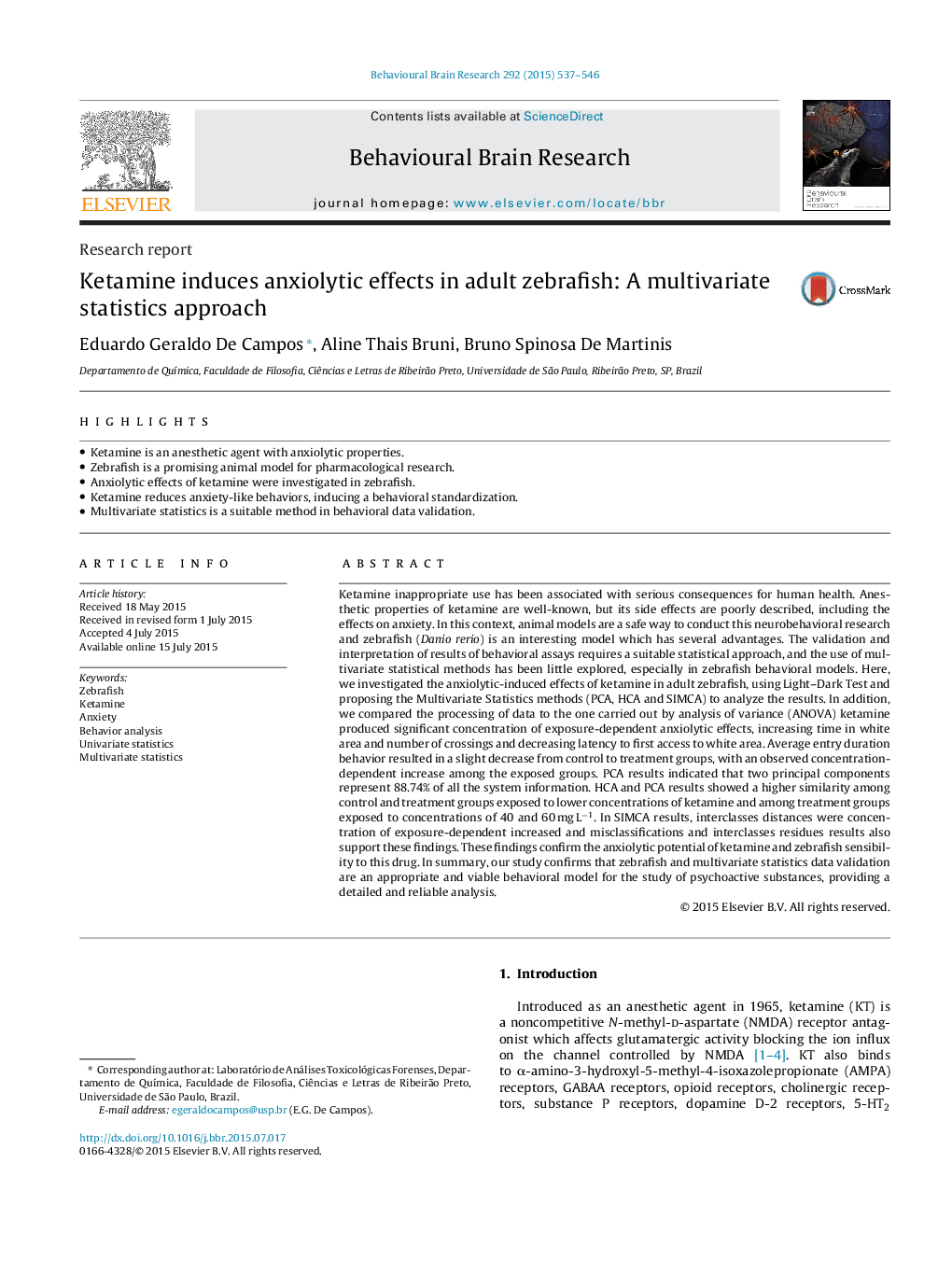| Article ID | Journal | Published Year | Pages | File Type |
|---|---|---|---|---|
| 6256558 | Behavioural Brain Research | 2015 | 10 Pages |
â¢Ketamine is an anesthetic agent with anxiolytic properties.â¢Zebrafish is a promising animal model for pharmacological research.â¢Anxiolytic effects of ketamine were investigated in zebrafish.â¢Ketamine reduces anxiety-like behaviors, inducing a behavioral standardization.â¢Multivariate statistics is a suitable method in behavioral data validation.
Ketamine inappropriate use has been associated with serious consequences for human health. Anesthetic properties of ketamine are well-known, but its side effects are poorly described, including the effects on anxiety. In this context, animal models are a safe way to conduct this neurobehavioral research and zebrafish (Danio rerio) is an interesting model which has several advantages. The validation and interpretation of results of behavioral assays requires a suitable statistical approach, and the use of multivariate statistical methods has been little explored, especially in zebrafish behavioral models. Here, we investigated the anxiolytic-induced effects of ketamine in adult zebrafish, using Light-Dark Test and proposing the Multivariate Statistics methods (PCA, HCA and SIMCA) to analyze the results. In addition, we compared the processing of data to the one carried out by analysis of variance (ANOVA) ketamine produced significant concentration of exposure-dependent anxiolytic effects, increasing time in white area and number of crossings and decreasing latency to first access to white area. Average entry duration behavior resulted in a slight decrease from control to treatment groups, with an observed concentration-dependent increase among the exposed groups. PCA results indicated that two principal components represent 88.74% of all the system information. HCA and PCA results showed a higher similarity among control and treatment groups exposed to lower concentrations of ketamine and among treatment groups exposed to concentrations of 40 and 60 mg Lâ1. In SIMCA results, interclasses distances were concentration of exposure-dependent increased and misclassifications and interclasses residues results also support these findings. These findings confirm the anxiolytic potential of ketamine and zebrafish sensibility to this drug. In summary, our study confirms that zebrafish and multivariate statistics data validation are an appropriate and viable behavioral model for the study of psychoactive substances, providing a detailed and reliable analysis.
